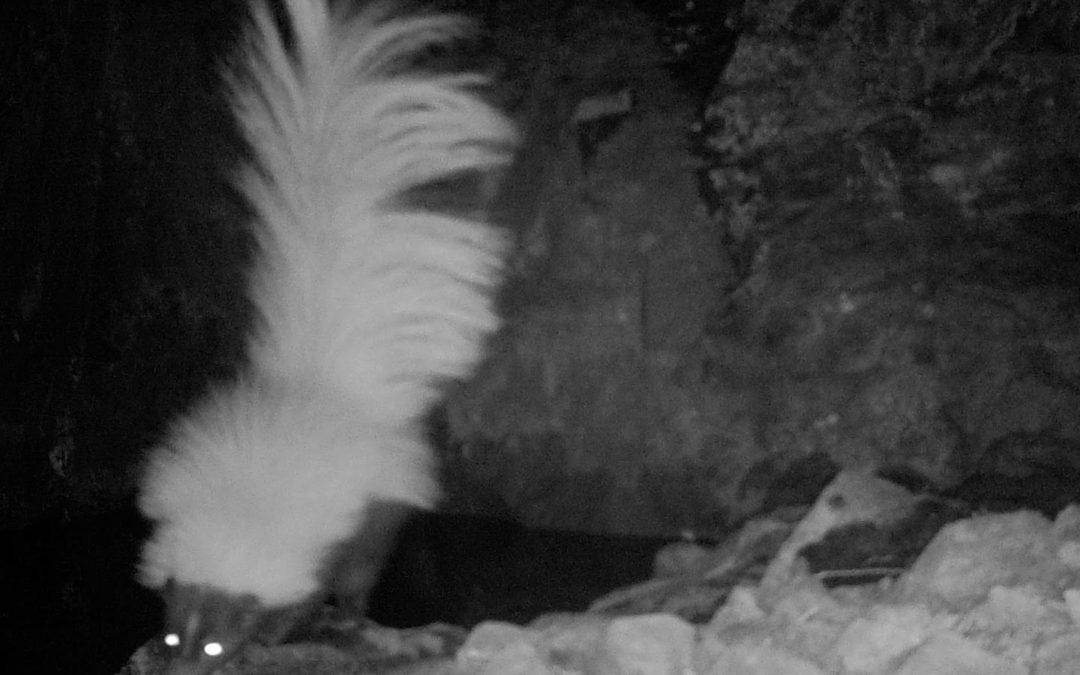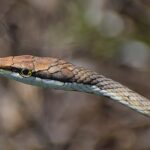Today, we’re excited to feature the hooded skunk (Mephitis macroura). This little creature has been captured on Sky Island Alliance cameras as part of the Border Wildlife Study and captured on Patagonia Area Resource Alliance (PARA) cameras on the west side of the Patagonia Mountains. Through this collaboration, we’re excited to observe how hooded skunks migrate between the U.S. and Mexico, seeking habitats that include lowlands, wooded mountains, and areas with streams and springs.
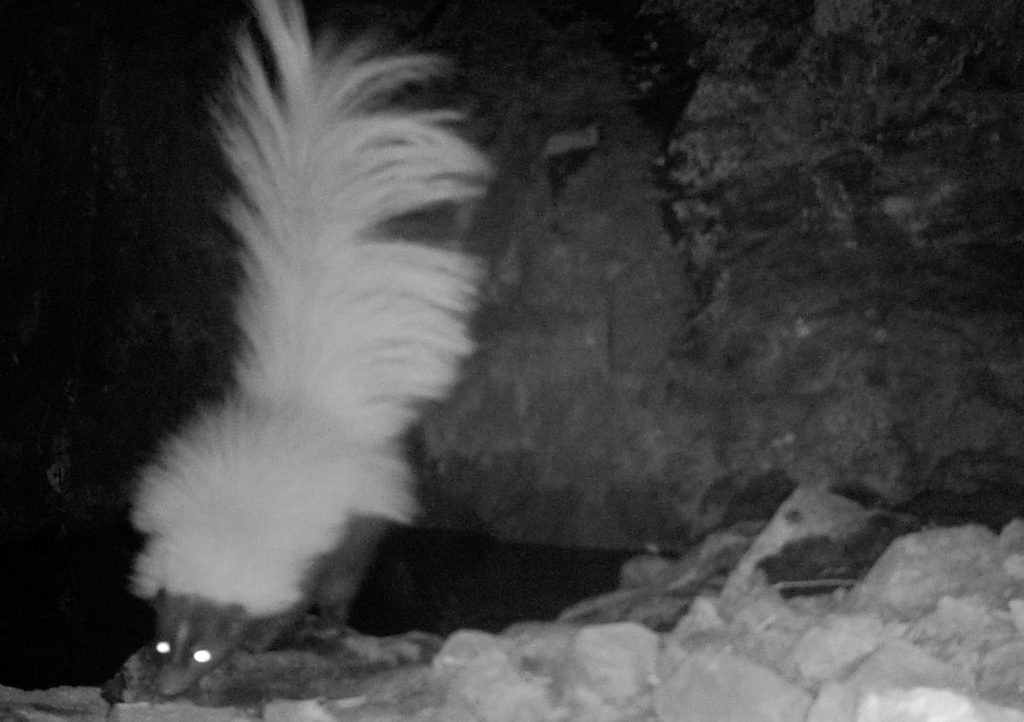
A hooded skunk found in the Patagonia Mountains. © Patagonia Area Resource Alliance
Here are some facts about hooded skunks to get you acquainted with their habits and habitats—all without having to get up close and personal!
1. The hooded skunk species is found throughout the American Southwest (Arizona, New Mexico, and Texas), Mexico, and Central America.

Hooded Skunk Range. Source: The Animal Files
2. Within the Mephitis macroura species, there are four subspecies. Only one, the Mephitis macroura milleri, is found in the American Southwest and in northern Mexico.
3. When compared to the size of other skunk species, the hooded skunk falls right in the middle. It is smaller than striped skunks and larger than spotted skunks. (All three of these species have been caught on PARA and Sky Island Alliance cameras.)
4. Hooded skunks are easily identified by the long white hair that covers their bodies and necks. Their heads and sides are often black, however, giving them the appearance of wearing a hood. Their tails tend to be bushier than other skunk species with a feather-like appearance.
5. Hooded skunks build dens in habitats with rocks and plentiful vegetation. They like to live near a water source, such as a river, spring, or stream, and tend to prefer areas with lowlands, forests, or the high desert.
6. Mating season for hooded skunks typically falls between February and March. Females will carry their young, called kits, for two months before giving birth to a litter. Each litter contains three to eight offspring.
7. Hooded skunks live an average of three years, though they tend to live shorter in the wild due to predators.
8. Hooded skunks are nocturnal. They leave their dens near dusk and spend the night searching for food.
9. Like raccoons, hooded skunks have been known to seek out and eat human garbage. Mostly, though, their diet consists of insects, vertebrates, and a little bit of plant material (such as fruit).
10. Hooded skunks are threatened by humans (hunting, roadkill) more than any other predator. To protect themselves from predators, they will hide in the burrows or dens of other animals or take cover in cholla cacti. They can also spray in defense like other skunk species.
The hooded skunk species’ conservation status is listed as “Least Concern” on the IUCN Red List, and it’s believed their population is steadily increasing across the U.S., Mexico, and Central America.
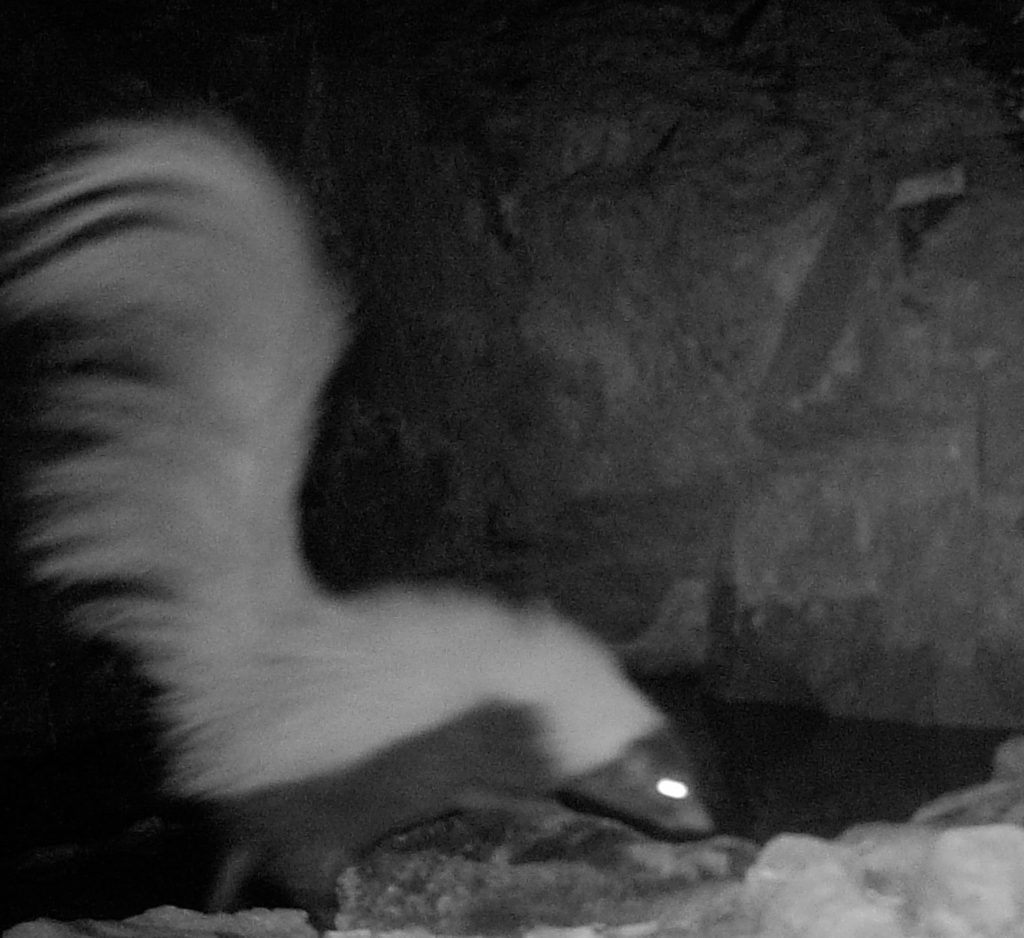
Hooded skunk. © Patagonia Area Resource Alliance
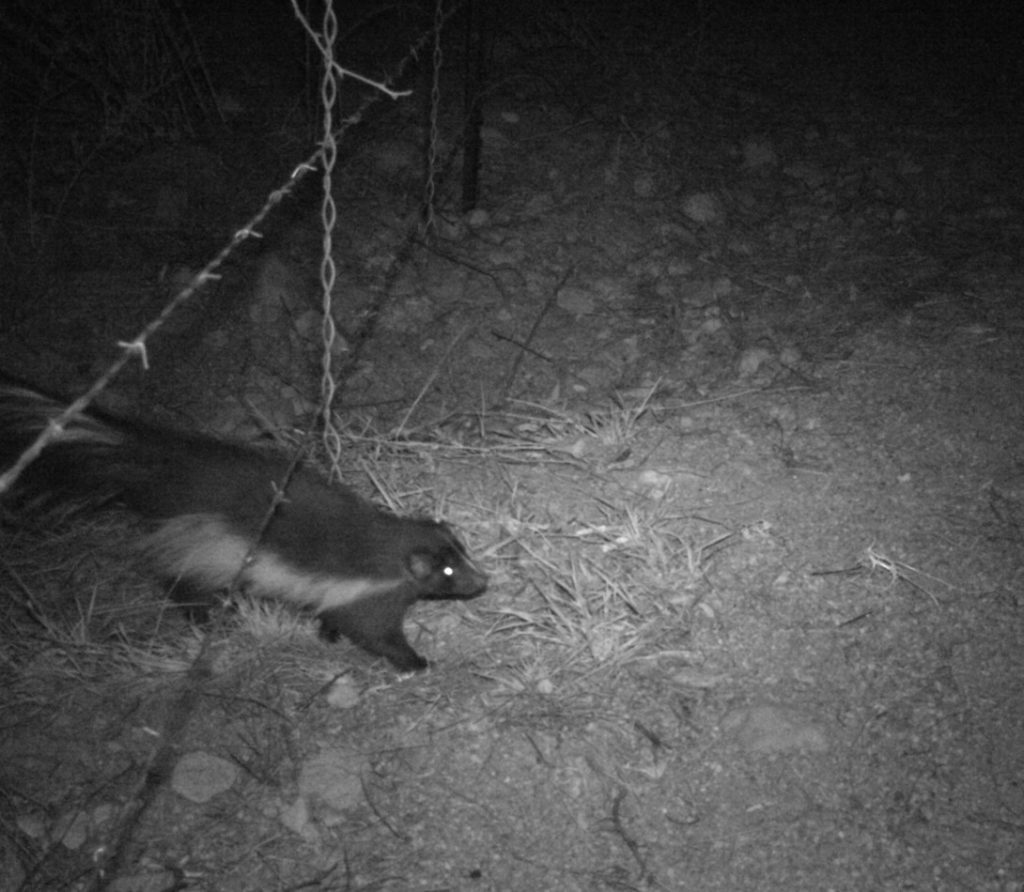
Hooded skunk with dark fur. © Sky Island Alliance
Similar Creature Features:
Western Spotted Skunk (Sky Island Alliance)
Hooded Skunk Sources:

